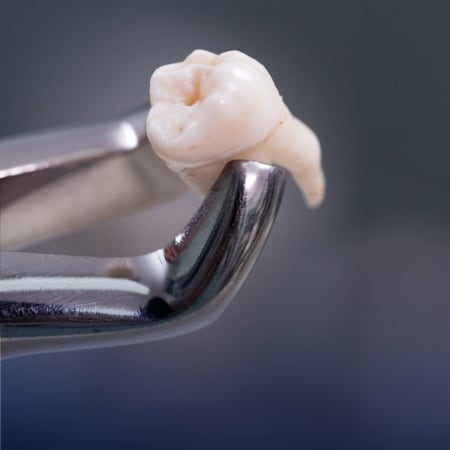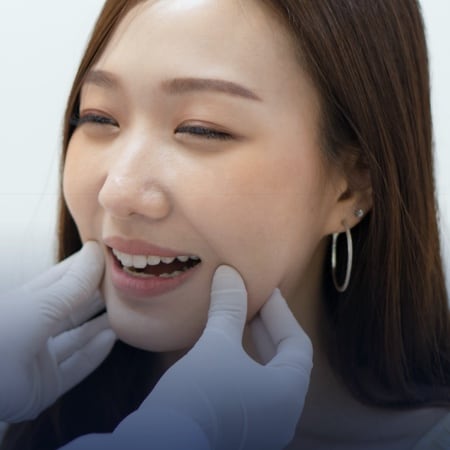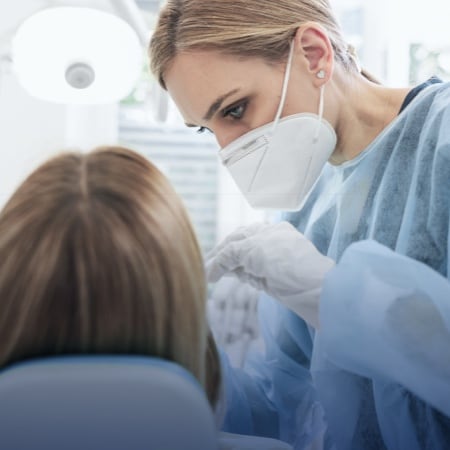Oral surgeons make up one of nine specializations in dentistry. They are recognized and regulated by the Royal College of Dental Surgeons of Ontario (RCDSO).
A team of doctors at Credit Valley Oral Surgery specializes in diagnosing and treating diseases and injuries to the human mouth and face. Oral surgeons diagnose, remove, treat or repair diseased or damaged structures in the mouth, maxillofacial (behind the nose), and facial bones.
Oral surgeons practise in hospitals and private clinics and are authorized to order and read CT (computed tomography) scans. Let’s explore CT scans and different types in more detail.
What Are CT Scans?
When healthcare professionals, including dentists, and oral and maxillofacial surgeons, need to take a deeper look inside the body, face, or mouth, they use CT scans. These provide even more information than x-rays and ultrasounds.
A CT scan examines internal structures within the body without invasive surgery. It takes multiple images using a computer and a rotating x-ray machine to produce a series of pictures.
The cross-sectional images show bones, internal organs, blood vessels, and tissues. CT scans are taken in slices with cross-sectional imaging from head to foot or side to side.
Benefits of CT Scans
The benefits of having CT scans outweigh the risks.
- A focused x-ray beam reduces radiation scatter with better image quality.
- One scan provides multiple views and angles for a complete evaluation.
- Cone beam CT or CBCT scans give more information than conventional dental x-rays and thus exact treatment planning.
- The procedure is painless and noninvasive.
- Ability to show images of bone and tissue at the same time.
- There are no immediate side effects to the x-rays used for CT scans.
Why Do Oral Surgeons Order CT Scans?
The most common reason someone needs a CT scan prior to oral surgery is to obtain a highly detailed 3D image of the affected area. Oral surgeons can use the findings to digitally plan the most effective approach to treatment and obtain the best possible outcome for the patient.
They can also assess the need for further treatment and predict the degree of recovery. Cone beam CT is commonly used to evaluate, diagnose and treat the following:
- Jaw fractures or injuries
- Jaw pain or difficulty chewing
- Dentures (mouth prosthesis) complications
- Dental implant placement
- Temporomandibular joint disorder (TMJ)
- Evaluating sinuses and nasal cavity
- Jaw tumours
- Reconstructive surgery
Difference Between 2D and 3D Scans
2D x-rays and CT scans are two different medical imaging tests using imaging devices. If your oral surgeon has ordered one of these for you, it’s helpful if you understand what they are and the differences between them.
2D X-Ray
X-rays are widely available and more commonly used to see bones and detect cancers. They create 2D images and use radiation to produce those images.
It’s typically the first diagnostic imaging test requested before more sophisticated scans. As the radiation passes through the body, it absorbs in different amounts depending on the density of tissues. Bone blocks radiation and appears whiter than other tissues.
3D CT Scan
Cone beam CT or CBCT scans are the choice when regular dental x-rays or facial x-rays don’t provide sufficient information. Dentists and oral surgeons use the images to aid in implant dentistry, diagnose more severe cases, or complicated procedures.
The technology produces three-dimensional images of teeth, soft tissues, bone, and nerve pathways. In a single scan, it can cover the entire craniofacial region. With the advanced technology of CBCT scanners, other uses include endodontics and orthodontics.
Dental CBCT scans are different from conventional CT scans and have lower radiation exposure. In CBCT, the x-ray beam is in the shape of a cone that moves around the patient to produce hundreds of images.
Cone Beam Computer Tomography
At Credit Valley Oral Surgery, we understand your concerns and are committed to the highest level of patient care and safety. You can rest assured we are your advocates and have your best interest at heart.
That is why we have invested in 3D CBCT machines. With increased treatment accuracy and predictability in the outcome, you can visually understand a diagnosis and your treatment options.
Call us to find out how we can help improve the quality of your life with successful treatments involving the mouth, jaw, face, and skull.









